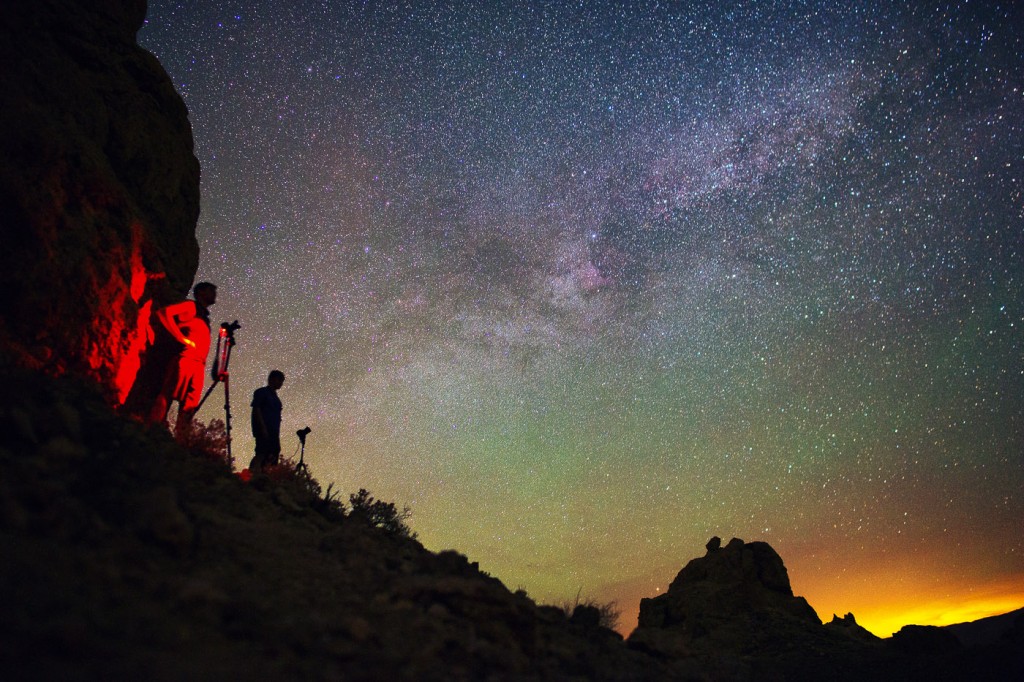
The Aurora isn’t visible in every part of the world, but a similar phenomenon will add some green to your astrophotos.
I was originally puzzled by a green glow that would show up in my nightscape images. I thought that perhaps my camera was just messing up the white balance or something but it’s been pretty consistent from place to place and camera to camera. It turns out that this faint green glow is an optical phenomenon much like the aurora called airglow. I heard of airglow before from Brad Goldpaint, one of the photographers that continues to inspire me with his work, but I never realized just how common a phenomenon is actually is.
Airglow is the reason that even on the darkest of nights, under a new moon, the sky isn’t ever purely black. To human eyes it may make the sky appear faintly blue. In photographs, it shows up as a greenish glow. At the recent lonelyspeck.com Trona Pinnacles workshop in early June, 2013, the airglow in combination with a rising moon and the sodium vapor lamps in the town of Trona, California made for a rainbow of colors that tinted all of the workshop participant’s photographs.

According to Atmospheric Optics, “…airglow is the light of electronically and/or vibration-rotationally excited atoms and molecules 80 km or higher.” “Green light from excited oxygen atoms dominates the glow.” Basically, after a day of sunshine, a number of air particles will absorb the energy of the sun, “exciting” the electrons in the atoms. Through the night, these excited particles slowly release their extra energy state as a photon. In this case, oxygen releases a green photon and we see this as green airglow.

One of the coolest things about airglow is that it happens all over the world; it isn’t exclusive to the polar regions like the aurorae and it pretty much occurs every night. This is in contrast to the aurorae which require an interaction between solar radiation and the particles of the upper atmosphere. Many of my past images of the milky way have had color balance and white balance changes that have basically eliminated the green glow of the airglow. Now, I think I’ll be more careful to preserve this subtle but beautiful phenomenon. Read more about airglow on wikipedia here.

![]()

2 Replies to “Photographing Airglow”